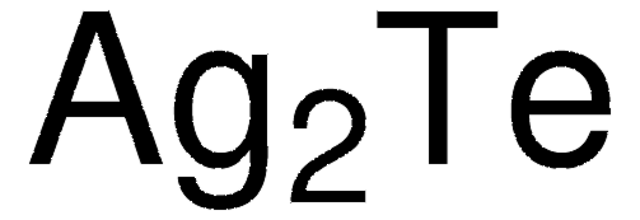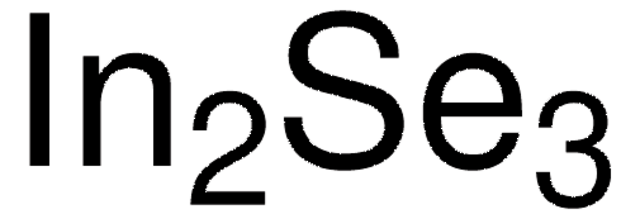This product has an acceptable appearance specification of Powder or Granules or Chunk(s). The physical form is lot-specific and reported in the product Certificate of Analysis. The particle size is not determined given the variability of the form. The material is not screened and the particle size is not controlled.
Select a Size
About This Item
Recommended Products
Quality Level
Assay
99.99%
greener alternative product characteristics
Design for Energy Efficiency
Learn more about the Principles of Green Chemistry.
sustainability
Greener Alternative Product
density
8.1 g/mL at 25 °C (lit.)
greener alternative category
, Enabling
SMILES string
[Se]=[PbH2]
InChI
1S/Pb.Se
InChI key
GGYFMLJDMAMTAB-UHFFFAOYSA-N
General description
Application
Packaging
Signal Word
Danger
Hazard Statements
Precautionary Statements
Hazard Classifications
Acute Tox. 3 Inhalation - Acute Tox. 3 Oral - Aquatic Acute 1 - Aquatic Chronic 1 - Repr. 1A - STOT RE 2
Storage Class Code
6.1D - Non-combustible acute toxic Cat.3 / toxic hazardous materials or hazardous materials causing chronic effects
WGK
WGK 3
Flash Point(F)
Not applicable
Flash Point(C)
Not applicable
Personal Protective Equipment
Regulatory Listings
Regulatory Listings are mainly provided for chemical products. Only limited information can be provided here for non-chemical products. No entry means none of the components are listed. It is the user’s obligation to ensure the safe and legal use of the product.
PDSCL
Poisonous substance
PRTR
Specified Class I Designated Chemical Substances
Class I Designated Chemical Substances
ISHL Indicated Name
Substances Subject to be Indicated Names
ISHL Notified Names
Substances Subject to be Notified Names
JAN Code
254231-VAR:
254231-25G:4548173125107
254231-100G:4548173125091
254231-BULK:
Choose from one of the most recent versions:
Already Own This Product?
Find documentation for the products that you have recently purchased in the Document Library.
Articles
Thermoelectric materials comprise a wide range of solid compounds distinguished by their ability to convert thermal and electrical energy.
-
What is the physical form of this material? I asuume it is a powder but what is the mesh/size characteristics?
1 answer-
Helpful?
-
Active Filters
Our team of scientists has experience in all areas of research including Life Science, Material Science, Chemical Synthesis, Chromatography, Analytical and many others.
Contact Technical Service











